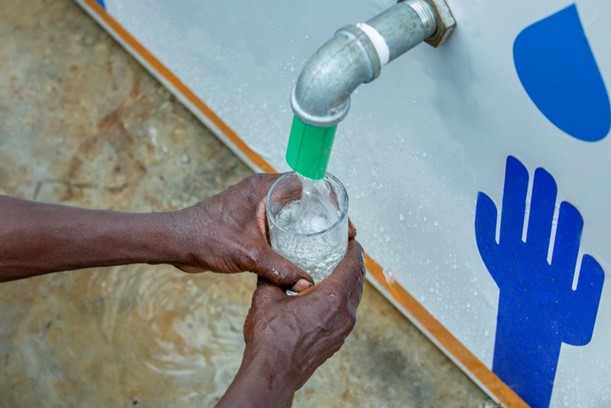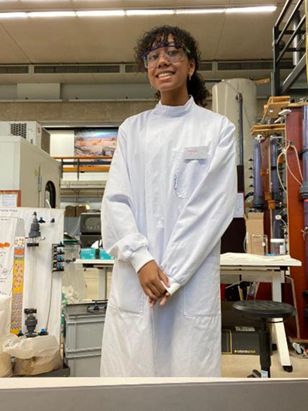Constant Innovation: A pH Adjustment Solution in the Pipeline
- Muneeza Aftab
- Nov 15, 2021
- 4 min read
In Ghana, hydrogeological assessments at certain potential Project Maji sites have shown the groundwater is slightly too acidic to meet WHO guidelines for drinking water. As a result, several communities in need of a water source cannot be granted one. Thus, in collaboration with the African Water Corridor, Project Maji has partnered with an undergraduate Civil Engineering Student at the Delft University of Technology in the Netherlands to design a pH adjustment solution. Thyara Leysner, a final-year student, is currently working on this solution to be implemented across our Ghanaian sites, as part of her thesis for the completion of her undergraduate degree.
The study is being guided by the following research question: What would be an optimal technological design for an appliance that can effectively neutralize acidic groundwater into safe drinking water for water kiosks? Next, the solution designed must fulfil a specific set of technical and logistical requirements. Eventually, these will also provide the evaluation criteria for final assessment of the efficacy of the solution being designed. These requirements are as follows:
Effectiveness. The most indispensable criterium is that the solution must fulfil its purpose, which is to effectively increase the pH-level of the groundwater. In order to meet WHO Guideline standards and the national Ghana Standard GS 175-1, the pH must lie between 6.5-8.5 after treatment.
Maintainability. The water kiosks are managed by caretakers of the community itself. Communication with these caretakers is often difficult due to unreliable cellular networks and cost. Due to the scale of Project Maji – over 250 water points – it is nearly impossible to check and maintain individual kiosks. Thus, the solution should require as little maintenance as possible.
Constructability. For a design to have a high constructability, is for the construction process to be as quick and easy and possible. Ideally, the design should not interfere with the current structure of the water-pumping system. Such a design is most likely unattainable, but interference should be minimal. A design that requires welding, heavy machinery, or similar operations for instalment is undesirable. It should also be sturdy enough to lessen the chances of breakage during handling.
Robustness. The robustness of the design is in its ability to remain functioning with a changing environment. Although somewhat similar to the constructability, it differs in that robustness is measured throughout the design’s life span rather than only regarding its installation. For example, a design that relies on electric power through a power grid can experience failure during power outages. Under these circumstances, a mechanical design would still function and thus be considered more robust. Seeing as the lifespan of the water kiosks should exceed 10 years, the design should have an ideal lifespan of at least 2 years.
Cost. Operation and maintenance of the Project Maji Model are intended to be financially self-sustainable. Any additional expenditures for maintenance of the design will hence need to be feasible within the proceeds. This ties into the low maintenance criterium as well. The installation costs should also be as low as possible, aiming around 5%-10% of the water kiosks costs. It is important to avoid over-engineering elements at the expense of financial feasibility.
Possible Solutions
Solution 1: Aeration
The cause of the low pH found in the groundwater samples is a high concentration of carbon dioxide. The decomposition and microbial respiration of micro-organisms in the soil releases carbon dioxide, which dissolves into the water. The first possible solution is one that tackles this problem at its core: aeration. The carbon dioxide concentration in the atmosphere is significantly lower than in the groundwater; this can be utilized in a cost-effective manner with aeration. Aeration brings water and air in close contact and lets the dissolved gasses escape into the air. Geochemical simulations were run on the borehole data that shows aeration can effectively remove nearly 80% of dissolved carbon dioxide and increase the pH to within the safety standards. The easiest way to aerate the water is by introducing a spray system through which the water enters the tank; very little adjustments have to be made to the existing structure and the water-air contact is significantly increased. This design can be easily constructed in the tank and is both technically and financially feasible.
Test Setup for Testing Calcite Filter and the Spray Aeration
Solution 2: Increasing the Alkalinity of the Groundwater
The second possible solution focuses on increasing the alkalinity of the groundwater; alkalinity is the buffering capacity of the water to resist acidification. This solution is only suitable for the groundwater that has a low alkalinity. By dissolving calcite into the water, the alkalinity can artificially be increased, and the acidity will decrease. Calcite is naturally found in shells, so a filter can easily be constructed filled with this media.
Pumping the “groundwater” through the shell filter
While Thyara is currently testing both possible solutions to see how the pH levels respond to each technique, a successful pH adjustment solution will be very valuable for safe water enterprises in accelerating safe water access for rural Ghanaian communities. Project Maji’s Country Director in Ghana, Amol Parker, is overseeing progress on this project as he continues to share feedback on the applicability and feasibility of proposed solutions. Thyara is set to submit her thesis later this year, delivering a game-changing solution directly contributing to SDG 6 – universal access to clean drinking water. Keep up the good work Thyara!

























Comments